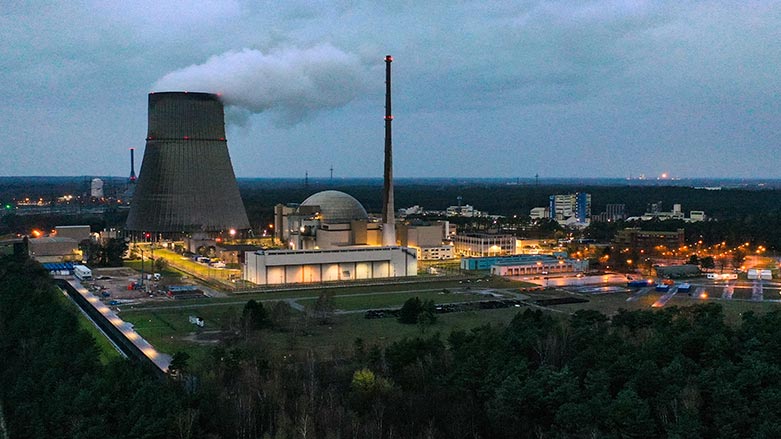The ups and downs of the global nuclear industry

As Germany prepares to shut its last nuclear reactors for good, other countries are turning to nuclear as a means of boosting their energy independence and cutting fossil fuel emissions.
Here is a global snapshot of the controversial industry, which has seen some improvement in its fortunes but whose long-term future remains uncertain.
Post-Fukushima setback
Nuclear power is currently used in 31 countries -- Germany excluded -- and accounts for around 10 percent of electricity generated worldwide, according to the International Energy Agency (IEA).
The industry suffered a serious setback as a result of the Fukushima nuclear disaster in Japan in 2011, and many reactors were mothballed due to safety fears.
China slowed its huge reactor construction programme, while Germany and Switzerland decided to phase out nuclear altogether.
Italy had already decided to abandon atomic power in 1987, in the wake of the explosion at the Chernobyl power plant in Ukraine, the worst nuclear disaster in history.
Worldwide, the industry has gone from a high of 441 operating reactors in 2002 to 422 at the end of 2022, according to the International Atomic Energy Agency (IAEA).
Globally nuclear power has returned to its 2021 production peak but the outlook remains uncertain.
Existing plants are ageing and the number of new projects launched per year worldwide is far lower than in the 1970s and 1980s. Ten new nuclear power projects got off the ground in 2022, compared to 44 in 1976.
Since Russia's invasion of Ukraine and its seizure of the Zaporizhzhia plant, Europe's largest nuclear facility, fears over safety have again been on the rise in some quarters.
Traditional heavyweights
The United States is still the world's biggest civil nuclear power, with 92 reactors. But they are ageing -- 42 years old on average -- and only two new ones are under construction.
President Joe Biden nonetheless champions nuclear as a means of getting the country running 100 percent on what he terms "clean energy" by 2035, and his administration plans to support the industry.
France, which has 56 reactors aged 37 years on average, uses the highest proportion of nuclear power per inhabitant.
After initially deciding to reduce its dependence on atomic energy, it is now planning to bring six to 14 new reactors on stream, starting from 2035-2037.
However, the new-generation Pressurised Water Reactors (EPRs) championed by France's debt-laden state-controlled energy giant EDF have been beset with lengthy construction delays and cost overruns, raising doubts about the viability of the new technology.
Britain has nine reactors, most of which are nearing the end of their lives, and the government plans to build eight new ones by 2050.
But that endeavour has also been beset by major delays and spiralling costs. The sole UK reactor currently under construction, Hinkley Point C, is way over budget and schedule.
Active giants
Today, the most active civil nuclear powers are China, for its domestic market, and Russia, for exports.
Over the past three years, of the 25 construction projects started worldwide, all are either located in China or are backed by the Russian nuclear industry, according to the World Nuclear Industry Status Report (WNISR), a survey conducted by independent experts based on publicly available data.
China now has 57 reactors.
Beijing is using Russian, US and Canadian technology but has kept its focus on domestically located projects, or partnerships with Pakistan.
Russia, on the other hand, dominates the international market.
Of the 25 reactors in whose construction it has been involved since the 2000s, only five are in Russia itself.
The rest are in Bangladesh, Belarus, China, India, Iran, Slovakia, Turkey and, since 2022, Egypt.
"The new thing here is the arrival of countries that didn't use nuclear power before -- like Bangladesh and Egypt," noted Mycle Schneider, the lead author of the WNISR, who sees this as a Russian strategy to create "long-term interdependence".
Cautious renewed interest
Other countries are showing renewed interest in nuclear in the wake of the energy crisis triggered by Russia's war on Ukraine.
Belgium, which in 2003 passed a law phasing out atomic power, is now delaying its exit by a decade, until 2035.
Disaster-hit Japan is weighing the construction of new reactors, even though it will already struggle to restart existing plants it mothballed after Fukushima and win over a reluctant public.
The Czech Republic, India and Poland view nuclear as a means to reduce their dependence on carbon-emitting coal-fired plants.
The Netherlands and Sweden are also showing interest.
These circumstances led the IAEA last year to raise its forecasts for the sector for the second year running, predicting that installed nuclear power worldwide could more than double by 2050.
However, for this to happen "a number of challenges need to be addressed", the UN agency's director general Rafael Grossi said.
These include "regulatory and industrial harmonisation and progress in high-level waste disposal", he added.
Other countries, such as New Zealand, continue to remain staunchly opposed to nuclear power due to the costs and the safety risks.
And the 27-nation European Union is deeply divided over whether it should support the industry or not.
